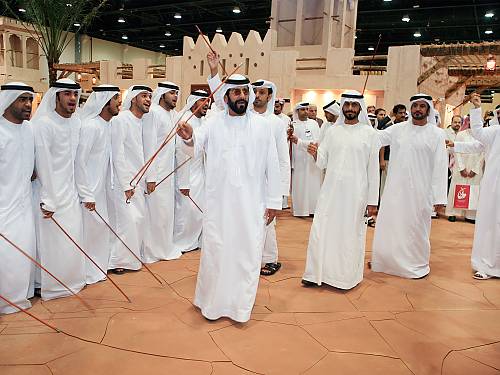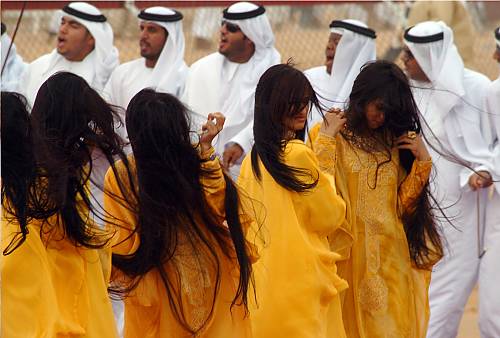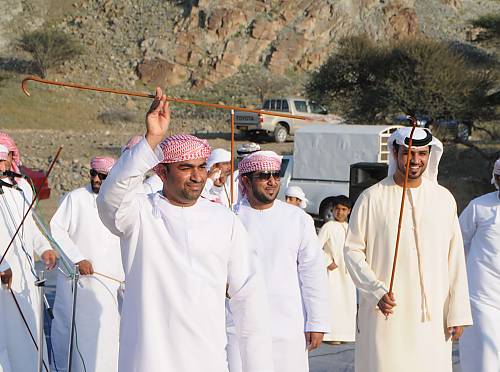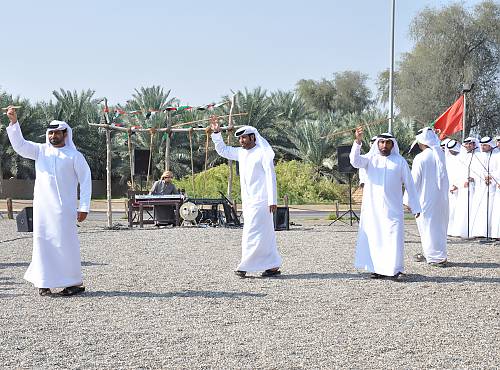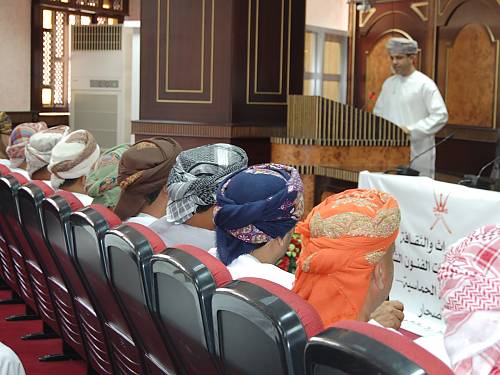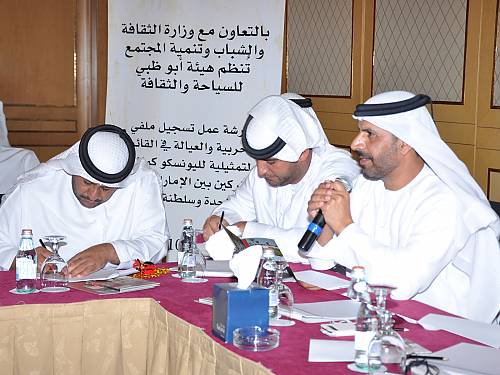Al-Razfa, a traditional performing art
Inscribed in 2015 (10.COM) on the Representative List of the Intangible Cultural Heritage of Humanity
Al-Razfa is a traditional performing art practised throughout the United Arab Emirates and the Sultanate of Oman. It is performed by men of all ages and classes during social occasions, such as weddings and national festivals. Male performers form two facing lines with dancers filling the space between. Led by the main singer, the two rows create a dual chorus, singing chants in an antiphonal manner to the accompaniment of drums and other instruments. Many chants are verses of traditional Nabati poetry, carefully selected to match the occasion. The dancers perform choreographed movements to the music while holding wooden replica rifles in their hands and in some cases, young girls swing their hair in time to the music. Originally performed as a communal celebration of victory, Al-Razfa is now widely popular as a form of entertainment. Practitioners have adapted musical instruments and composed melodies to interest younger audiences while maintaining the older expressions and oral traditions of the art. Performers may include heads of State and elders or very young children. Today, Al-Razfa is transmitted directly within the family through participation and observation at social occasions. The roles of individual performers are learnt by practice, while girls receive instruction from their mothers and older sisters.



